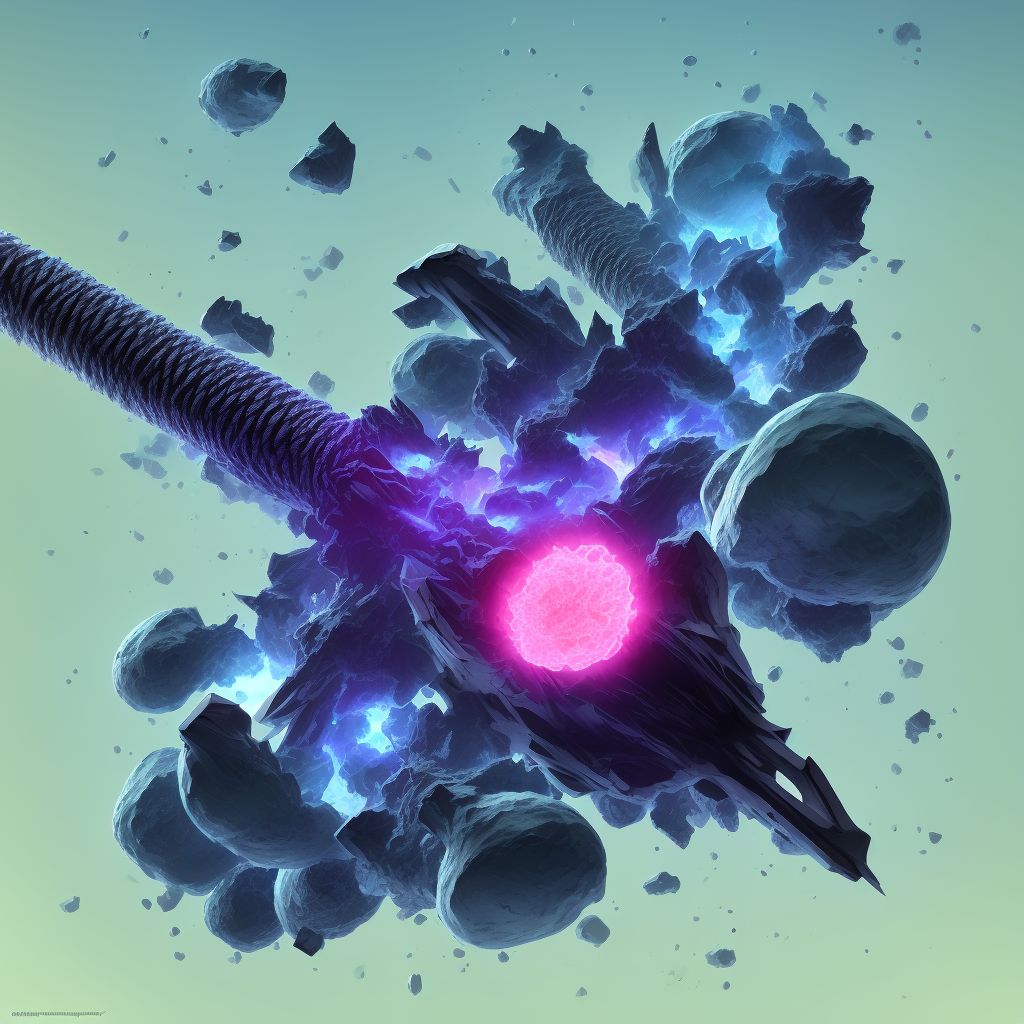
Other fracture of shaft of unspecified tibia, subsequent encounter for closed fracture with malunion Save
ICD-10 code: S82.299P
Disease category: S82.299: Other fracture of shaft of unspecified tibia
Understanding Other Fracture of Shaft of Unspecified Tibia, Subsequent Encounter for Closed Fracture with Malunion
When it comes to bone fractures, one specific type that can occur is the "Other Fracture of Shaft of Unspecified Tibia, Subsequent Encounter for Closed Fracture with Malunion." This condition refers to a fracture in the shaft of the tibia (shinbone) that has not been specified further. The subsequent encounter indicates that the patient is seeking medical attention again after the initial fracture, and the "with malunion" specifies that the healing process resulted in a misalignment or improper union of the bone.
It is important to note that this article does not cover treatment options for this condition but focuses on providing information about the nature of the fracture.
- Causes: Other fractures of the shaft of the tibia can occur due to various reasons, such as falls, sports injuries, or accidents. Factors like weakened bones due to osteoporosis or repetitive stress on the tibia can also contribute to the occurrence of such fractures.
- Symptoms: Common symptoms of this type of fracture include pain, swelling, tenderness, difficulty in walking or bearing weight on the affected leg, and potentially visible deformity or abnormal positioning of the leg.
- Diagnosis: To diagnose an "Other Fracture of Shaft of Unspecified Tibia, Subsequent Encounter for Closed Fracture with Malunion," a healthcare professional will typically conduct a thorough physical examination, review the patient's medical history, and order imaging tests like X-rays or CT scans to assess the extent of the fracture and malunion.
- Complications: If left untreated, a malunion can lead to long-term complications such as chronic pain, limited mobility, and an increased risk of developing arthritis in the affected joint.
- Prevention: While it may not always be possible to prevent fractures, certain measures can reduce the risk. These include maintaining a healthy diet rich in calcium and vitamin D, engaging in regular weight-bearing exercises, and taking precautions to prevent falls or accidents.
Remember, if you are experiencing any symptoms associated with a fracture, it is essential to seek medical attention promptly to receive an accurate diagnosis and appropriate treatment.
Disclaimer: This article is for informational purposes only and does not constitute medical advice. Consult a healthcare professional for proper diagnosis and treatment options.
Treatment of Other fracture of shaft of unspecified tibia, subsequent encounter for closed fracture with malunion:
Treatment Options for 'Other fracture of shaft of unspecified tibia, subsequent encounter for closed fracture with malunion'
When it comes to managing a fracture in the shaft of the tibia with malunion, there are various treatment options available. The choice of treatment depends on factors such as the severity of the malunion, the patient's overall health, and the goals of the in...
To see full information about treatment please Sign up or Log in